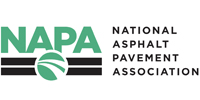Board Members need to see the business reason to continue or increase their engagement on a Trade Association Board of Directors. They want their time and money invested in solutions that shape a more favorable business environment. Sometimes complex or even routine Governance gets in the way, and some Board leaders will pull back or leave. If this is the case and the timing is right, it could make sense to invest time and resources into streamlining Governance.
Nowadays, Boards must be perceived as a third place between work and home and have the capacity to nurture Strategic Partnerships . First, there are opportunities to network. Secondly, their time is leveraged by joining together to share knowledge and develop pre competitive solutions that benefit the entire Industry. Based on research and experience, one of the essential characteristics of CEOs, boards, and these Strategic Partnerships is constructive governance, leadership, and processes. This is one of the leading indicators of success for Trade Associations and their Board Members.
For Board and Trade Association Strategic Partnerships to have any hope of surviving over time, all participants must be absolutely committed to continual, truthful communication and thorough transparency regarding not only opportunities, strengths, and aspirations, but also risks, weaknesses, potential threats, and all the other subjects about which polite society would prefer never to speak. It’s a heavy lift but that’s why its important to build a Board culture around the third place between work and home.
If it doesn’t already exist, there must be agreement on purpose, governance, leadership, and processes between Boards and Trade Associations or things start to go sideways. Rules of engagement matter. Who makes decisions? And by what process and authority are decisions made? Who answers to whom? And about what? These kinds of simple questions should not be taken for granted.
It may be time for your organization to revisit its Governance practices. Before moving forward, make sure the Board and Staff Leaders are ready and at the point to engage in this type of heavy lifting. There are key questions that must be answered in order to move forward:
- Has the Board determined that its Governance is stifling and preventing its Trade Association from being nimble and effective in a time of chronic uncertainty?
- Is there a clear understanding as to how the current Governance structure was determined?
- Is there research that indicates a change in Governance structure is necessary?
- Are Board Members clear eyed about the outcome they want to achieve (and well aware of any downsides).
- Do Senior Staff, based on current challenges and resource allocation, have the bandwidth to staff and extensive Governance streamlining process?
Moving too quickly without recognizing the current state of play, having sufficient data, and buy-in from the Board and key staff could be a recipe for disaster.
 The Asphalt Industry and the NAPA (National Asphalt Pavement Association) strategic partnership is highly functional. The Board and the organization reflects one another’s values, and they are powered by innovation, data, science, and relationships. The Board utilized the arrival of their new CEO Audrey Copeland as an opportunity to revisit their Governance. From their perspective, the structure limited Board Engagement and Strategic Vision for the Industry. In addition, Board Meeting engagement was weak and could be as low as 60 percent at some meetings.
The Asphalt Industry and the NAPA (National Asphalt Pavement Association) strategic partnership is highly functional. The Board and the organization reflects one another’s values, and they are powered by innovation, data, science, and relationships. The Board utilized the arrival of their new CEO Audrey Copeland as an opportunity to revisit their Governance. From their perspective, the structure limited Board Engagement and Strategic Vision for the Industry. In addition, Board Meeting engagement was weak and could be as low as 60 percent at some meetings.
The Industry and NAPA collaborated over the course of an eighteen month period to revise their Governance structure. The Board established a Task Force to oversee the process that included Qualitative and Quantitative Research to understand the Industry’s challenges and their perceptions of NAPA’s Governance. The Committee and the Board devised a streamlined structure which delivered a maximum 30 member Board (reduced from its former geography based structure of 65 to 80 Board Members). Former State Board Representatives were invited to engage in Regional Advisory Groups. The new structure was unanimously approved by the Board and the Membership and was launched in January 2022. According to Audrey Copeland, the new structure is increasing member engagement, growing the membership, and strengthening the Industry’s grassroots network.
 The NAPA approach was successful because it didn’t become weighted down in an acrimonious debate. They used data and research to brainstorm and think through a volunteer framework that in the end will better serve and engage the Industry. This speaks volumes about the Asphalt Pavement Industry and its determination to continually bring itself to the next level. Audrey Copeland attributes the success of the Governance effort to “taking the time necessary to hear everyone, drill down to the most critical common denominators for focus, and reach a conclusion beneficial to the entire Industry.”
The NAPA approach was successful because it didn’t become weighted down in an acrimonious debate. They used data and research to brainstorm and think through a volunteer framework that in the end will better serve and engage the Industry. This speaks volumes about the Asphalt Pavement Industry and its determination to continually bring itself to the next level. Audrey Copeland attributes the success of the Governance effort to “taking the time necessary to hear everyone, drill down to the most critical common denominators for focus, and reach a conclusion beneficial to the entire Industry.”
As Economic conditions become more troublesome, it might be the right time to convene your Trade Association Board and determine if it’s the right time to streamline the organization’s governance structure. If it is, it could open a pathway to engaging the Board and the Industry in a quest that leads to a more favorable and competitive business environment for all member companies.
To learn more about how your Trade Association can conduct a Governance Review, please contact team@potomaccore.com.





